
1800 IR Bowl capacity (cm 3) 440 Recommended lubricant Turbine oil Class 1(With no additives), ISO VG32 VEX Ambient and fluid temperature 5 to 60C (No freezing) Bowl material Polycarbonate AMR Weight (kg) 1.62 1.67 Bowl guard Accessory (Standard) ITV Note) Conditions: Inlet pressure = 0.5 MPa, Number of drop = 5 drops/min, Turbine oil Class 1 (with no additives) ISO VG32, Temperature = 20C
How to Find the Flow Rate (At air temperature of 20C) Choke flow: (P2 + 0.1)/(P1 + 0.1) ) 0.5 293 273 + t Q = 120 x S x (P1 + 0.1) x Subsonic flow: when (P2 + 0.1)/(P1 + 0.1) > 0.5 Q = 240 x S x (P1 P2)(P2 + 0.1) x 293 273 + t Q: Air flow rate [ /min (ANR)] S: Effective area (mm2) P1: Upstream pressure [MPa] P2: Downstream pressure [MPa] t: Air temperature [C] Note 1) Formulas above are
capacity (cm3) 55 135 7 25 135 135 135 Recommended lubricant Class 1 turbine oil (ISO VG32) 5 to 60C (With no freezing) Ambient and fluid temperature Bowl material Polycarbonate Bowl guard Option Standard Weight (kg) 0.47 0.24 1.13 0.07 0.20 0.52 1.06 Note 1) The flow rate is 5 drips/min under the following conditions: Inlet pressure of 0.5 MPa; Class 1 turbine oil (ISO VG32); Temperature at 20C
(choked flow) Subsonic flow : Flow greater than the critical pressure ratio Standard condition : Air in a temperature state of 20C, absolute pressure 0.1 MPa (= 100 kPa = 1 bar), relative humidity 65%. It is stipulated by adding the abbreviation (ANR) after the unit depicting air volume.
10 6 (m 2 ) VX32 AC (Full wave rectification) 50/60 10 8.5 60 1 3 5 0.08 1.5 1.0 0.6 220 1.9 VX311 -00 DC 8.5 60 11 60 9.5 50 1 3 5 0.16 0.5 0.3 220 3.8 VX312 -00 50 55 22 60 47 18 AC 0.6 370 VX3225-00 2.2 0.19 4.6 VX33 1.0 530 VX3325-00 AC (Full wave rectification) 50/60 14 11.5 60 1 3 5 0.24 DC 11.5 60 0.3 0.2 5.8 220 1.0 VX313 -00 Note) They are values in an ambient temperatue of 20C
(coil temperature 20C, at rated voltage, without surge voltage suppressor) Note 2) Impact resistance: No malfunction when tested with a drop tester in the axial direction and at a right angle to the main valve and armature, one time each in both energized and deenergized states.
Series DXT474 Environment How to Calculate Flow Rate (At an air temperature 20C) Subsonic flow : P1+0.1013<1.89(P2+0.1013) 1 Do not use in atmospheres where the valve is in direct contact with corrosive gases, chemicals, salt water, water or steam. 2 Do not use in an explosive atmosphere. 3 Do not use in a place subjected to heavy vibration and/or shock.
or less Base mounted 20 Max. operating frequency (Hz) Manual override Non-locking push, Locking slotted, Push-locking slotted, Push-locking lever Not requited Lubrication JIS Symbol Free Mounting position Impact/Vibration resistance (m/s2) (2) 150/30 SY11 (A) 3 4 SY12 (A) 3 4 Dust-proof Enclosure (A) 2 (A) 2 Note 1) According to dynamic performance test JIS B8374-1981 (Coil temperature 20C
slotted style Max. operating frequency (Hz) VP Manual override Individual pilot exhaust style, Common Exhaust (pilot and main valve) style Pilot exhaust Not required Lubrication Base mounted Free Mounting position VQ Impact/Vibration resistance (m/s2) (2) 150/30 JIS Symbol Dust proof Protection structure VQZ Note 1) According to dynamic performance test JIS B8374-1981 (Coil temperature 20C
At 0.5 MPa, temperature 20C 1690 910 Elbow type Check valve Series AK Large valve capacity Low cracking pressure/0.02 MPa Port size Rc Effective area (mm2) Model 1 8 1 4 27.5 (Rc ) 95 (Rc ) 230 (Rc 1) AK2000 1 4 3 8 1 2 1 2 , 1 4 AK4000 AK6000 , , 3 4 , 1 Series AK 13-14-15 15 Courtesy of Steven Engineering, Inc.-230 Ryan Way, South San Francisco, CA 94080-6370-Main Office: (650) 588-9200
Port Solenoid Valve 3 Port Solenoid Valve Power Consumption (with power saving circuit) Temperature rise: 1C (with power saving circuit) V100 Specifications V100 Specifications V100 Specifications V100 Specifications Type With power saving circuit Standard Valves of specific power consumption can be manufactured to suit the f f f p f p p Power Consumption 0.1W 0.35W Temperature rise 1.0C 20C
The valve can be used at ambient temperatures as low as 20C, but take measures to prevent freezing or solidification of impurities, etc. 2. When used in cold areas, adopt freeze prevention measures such as draining the water from pipelines. If warmed with a heater, etc., avoid the coil unit.
The valve can be used at ambient temperatures as low as 20C, but take measures to prevent freezing or solidification of impurities, etc. 2. When used in cold areas, adopt freeze prevention measures such as draining the water from pipelines. If warmed with a heater, etc., avoid the coil unit.
The product can be used at an ambient temperature as low as 20C, but take measures to prevent the solidification or freezing of impurities, etc. 2. When using for water, etc. in a cold area, devise a means to prevent freezing, such as draining the water from pipelines after stopping supply and exhaust water for a pump or other device.
How to Find the Flow Rate (at air temperature of 20C) Subsonic flow when P1 + 0.1013 < 1.89 (P2 + 0.1013) Q = 226S P(P2 + 0.1013) Sonic flow when P1 + 0.1013 1.89 (P2 + 0.1013) Q = 113S (P1 + 0.1013) Q: Air flow rate [l/min (ANR)] S: Effective area (mm) P: Differential pressure (P1-P2) [MPa] P1: Upstream pressure [MPa] P2: Downstream pressure [MPa] Correction for different air temperatures
(coil temperature 20C, at rated voltage, without surge voltage suppressor) Note 2) Impact resistance: No malfunction when tested with a drop tester in the axial direction and at a right angle to the main valve and armature, one time each in both energized and deenergized states.
Standard condition: Flow rate converted to a volume at 20C, 101.3 kPa (absolute pressure), and 65% RH Normal condition: Flow rate converted to a volume at 0C, 101.3 kPa (absolute pressure), and 0% RH Reversible display mode When the switch is used upside down, the orientation of the display can be rotated to make it easier to read by using the reversible display function.
Standard condition: Flow rate converted to a volume at 20C and 101.3 kPa (absolute pressure) Normal condition: Flow rate converted to a volume at 0C and 101.3 kPa (absolute pressure) Response time The response time can be selected to suit the application.
Standard condition: Flow rate converted to a volume at 20C and 1 atm (atmosphere) Normal condition: Flow rate converted to a volume at 0C and 1 atm (atmosphere) * Also, the increase or decrease of the flow and temperature will not change the on/off status of the output while the forced output function is activated.
(Coil temperature: 20C, at rated voltage) Note 2) Impact resistance: No malfunction occurred when it is tested with a drop tester in the axial direction and at the right angles to the main valve and armature in both energized and de-energized states every once for each condition.
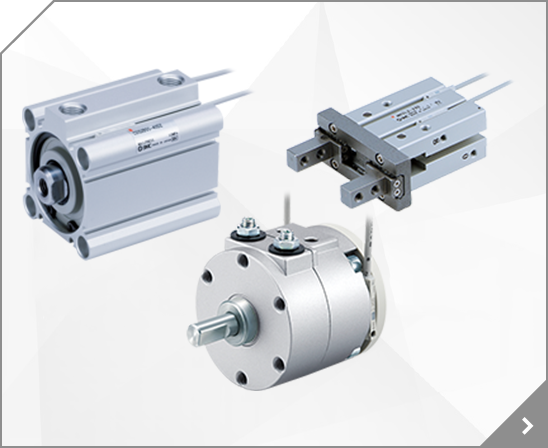
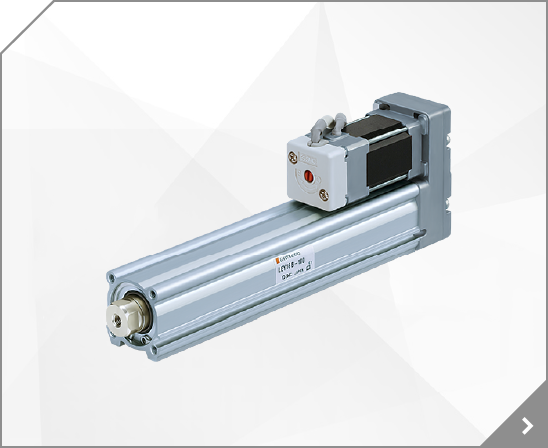
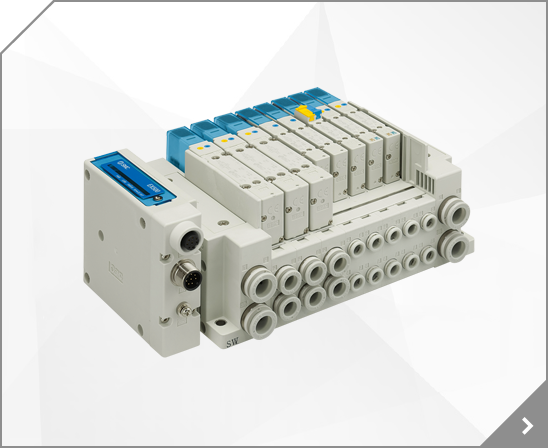
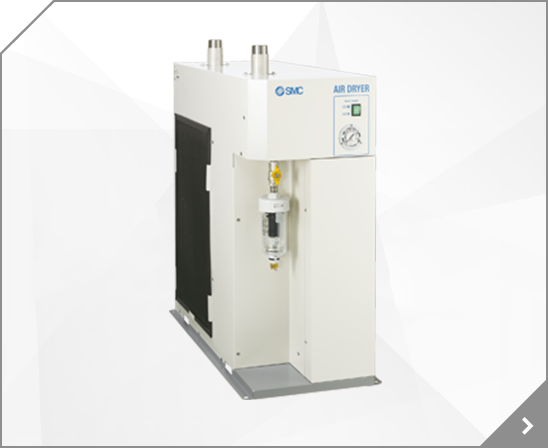
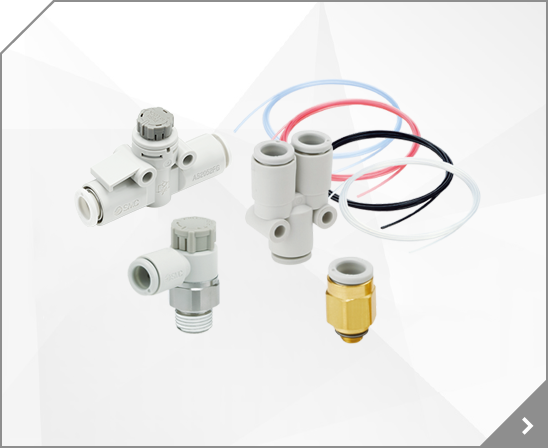

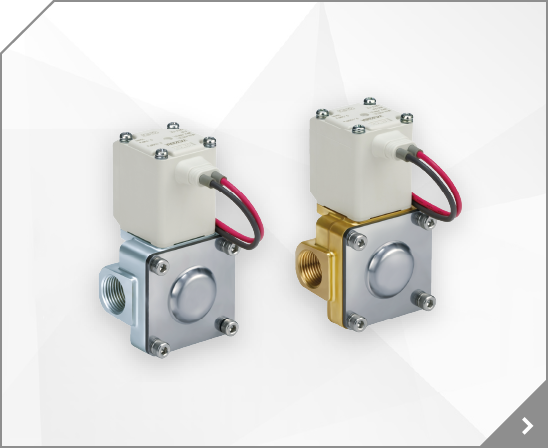

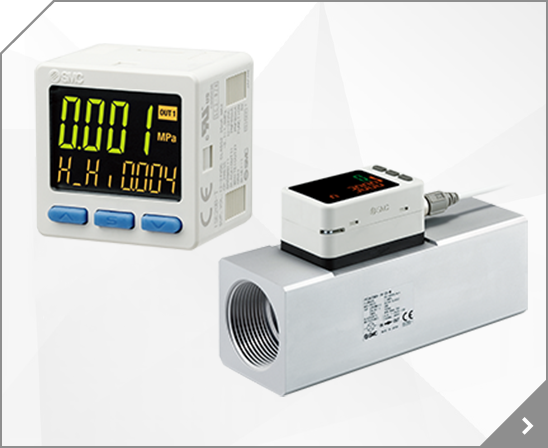
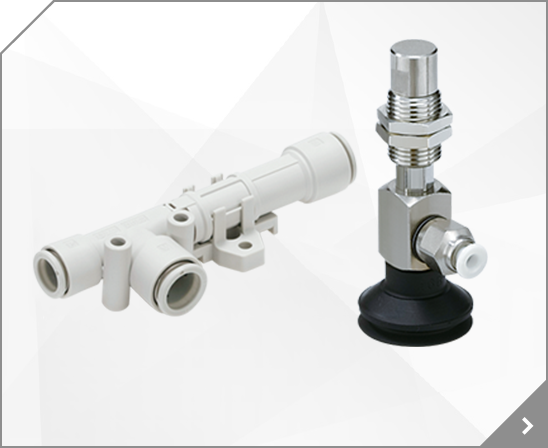

 AL800/900
AL800/900